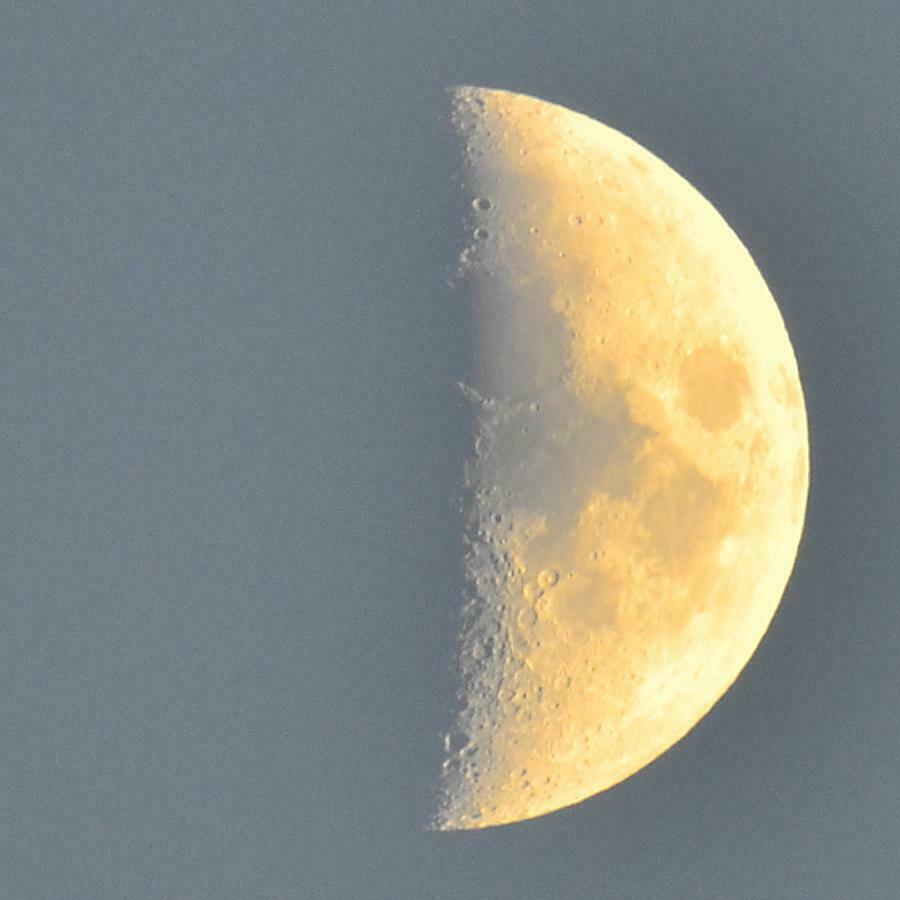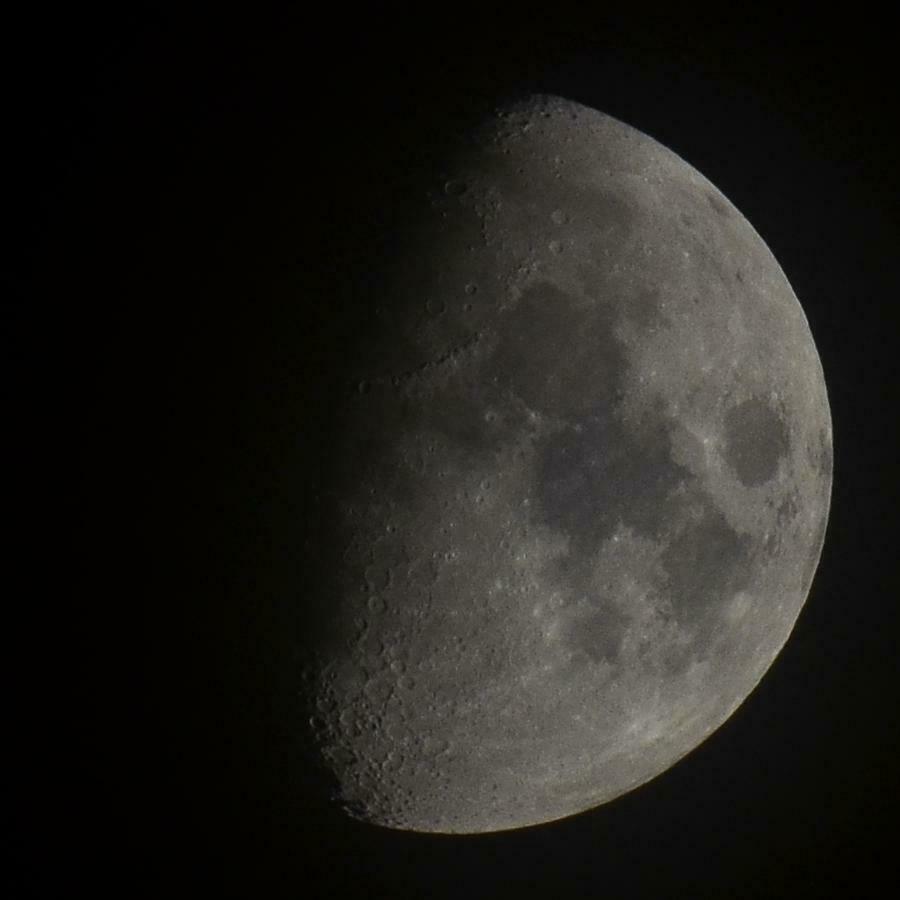#backyardastronomy

Acrobate / Acrobat
Grimpée au portique
Loin du cirque d'ici-bas
Sans bruit l'Ourse danse
Up the naked frame
Far from that circus down there
Starry Bear dances
#photo #photographie #photography #maphoto #myphoto #mywork #CC #BY-NC-ND 4.0
#astronomie #astronomy #backyardAstronomy #UrsaMajor #UMa #GrandeOurse #BigDipper
#haiku #HaikuDominical #HaikuSunday #bonneNuit #goodNight 🔭

Ein #Morgengruß in die Runde :-)
Der Blick vom Frühstückstisch, mit @raschmi@pod.geraspora.des Kaffee in der Hand ;-)

La nuit du chasseur 2
Où le smartphone est forcé dans ses retranchements...
#photo #photographie #photography #maphoto #myphoto #mywork #CC #BY-NC-ND 4.0
#ciel #sky #astronomie #astronomy #backyardAstronomy #Orion #bonneNuit #goodNight

#Jupiter is visible at #dusk at the moment and so here it is. I've labelled the following A: #SigmaAquarii, for orientation, J: Jupiter, G: #Ganymede, E: #Europa, C: #Callisto and you can just see I: #Io as a bulge to the bottom right of Jupiter itself. Data from #Stellarium. Exposure time: 1.3 s, F/6.3.
#MyWork #MyPhoto #CCBYSA #DSLR #Nikon #D7000 #BackyardAstronomy

Technically the last #FullMoon of the year will be at 04:37Z tomorrow but I might not be able to drag myself out of bed at that time and so here it is how it looked at around 17:00Z this evening rising in the #Eastern sky which to the naked eye is about as full as it can get. F/6.3, 1/1000 s, ISO 250.
#MyWork #MyPhoto #CCBYSA #DSLR #Nikon #D7000 #BackyardAstronomy #Moon #Autumn #2021
If you take an #overexposed #photograph of the #Moon, you may often notice a dark #halo around its #perimeter. This #evening's #Picture was taken at #dusk and the #sky was still quite light despite the deep blue it looks here with this exposure. It was taken almost exactly 36 hours before the next #FullMoon.

Here is a much faster #exposure where the sky appears black. This one is cropped.

#MyWork #MyPhoto #CCBYSA #DSLR #Nikon #D7000 #BackyardAstronomy #WaxingGibbous
One #Moon, three #exposures. These #photographs were taken seconds apart this #afternoon, around #sunset, and yet look quite different simply because of shutter speed. The most striking difference to me is the #colour of the #sky.
The first one has an exposure time of 1/160 s.

The next one has an exposure time of 1/320 s.

And the last one has an exposure time of 1/640 s.

#MyWork #MyPhoto #CCBYSA #DSLR #Nikon #D7000 #BackyardAstronomy #WaxingGibbous

Lucky shot - #Jupiter, #Saturn, #Venus, #Moon with #ISS :-))
#Mywork #foto #photo #backyardastronomie #backyardastronomy #astronomie #astronomy

Here's #Venus again #tonight but my attention was also drawn to some of the faint stars around it. At about the 10:30 position is #PsiSagittarii which has an #ApparentMagnitude of 4.85 at a distance of nearly 300 #LightYears. The other one which is currently closer to the #planet and at about the 9:30 position is #HIP94434 with an apparent magnitude of 5.75 and is about 1700 light years distant. Thanks to #Stellarium for providing the data. It's amazing that such dim stars can be seen with a non-specialist #lens and #camera.
Another #night and another #photograph of #Jupiter. This time you can three of its four big #Moons (they are #Ganymede, #Callisto and #Europa).

I've also included the #snapshot from #Stellarium so you can see the names of each.

If you compare tonight's #image with the #photograph from 11 days ago, you can see how much Jupiter has moved with respect to the background starts of #Capricorn. Planets literally are wanderers.

Of course, the real question is this: Is Stellarium a good model of reality or is reality a good model of Stellarium...
#MyWork #MyPhoto #CCBYSA #DSLR #Nikon #D7000 #BackyardAstronomy #Planets

In the early #evening a few minutes ago, the setting #Venus (sometimes called the #EveningStar) was bright near the #SouthWest #Horizon. It is currently is #Sagittarius and if you look closely, you can see #PhiSagittarii to the left and #LambdaSagittarii to the right of it. Exposure time: 0.3 s, ISO 250, focal length 220 mm, Aperture f/5.6.
#MyWork #MyPhoto #CCBYSA #DSLR #Nikon #D7000 #BackyardAstronomy

A #cloudy night but the #Moon is still shining through although highly diffused by atmospheric moisture. So, although in a clear sky, the exposure time would be a small fraction of a second to get the surface features clearly, here it was 1 s. I like the haziness of this #photograph, which is what I was deliberately looking for.
#MyWork #MyPhoto #CCBYSA #DSLR #Nikon #D7000 #BackyardAstronomy
I think of myself as a hobbyist #photographer interested in many things, including #astronomy and sometimes I get lucky. Tonight, for example, I noticed #Jupiter was close to the #Moon and so I got my #tripod out and tried to #photograph the pair. Currently, both are in #Capricorn and to get both, one needs a longish exposure. Here I used 2 s. This of course means that the Moon's features can't be seen as the lit surface is #overexposed but you can see its unlit side too.
The very nice thing about this image is that you can actually see Jupiter's four largest satellites too, so you could say that the photograph actually shows five #moons in total. Jupiter is forming a triangle here with #DenebAlgedi (bottom left) and #Nashira (bottom right)

By focusing around Jupiter itself, you can see its moons much better. From left to right, you can see #Europa, #Io, #Ganymede and #Callisto. The three #stars forming a diagonal line are, respectively, 45, 44 and 42 #Capricorni (left to right).

#MyWork #MyPhoto #CCBYSA #DSLR #Nikon #D7000 #BackyardAstronomy
Two #moons tonight, or rather the same #Moon but with different #exposure times. The first is darker with a faster shutter speed. It looks a bit more moody and atmospheric.

The second is a longer exposure and I think also better focused (both done manually) and so is brighter and sharper.

#MyWork #MyPhoto #CCBYSA #DSLR #Nikon #D7000 #BackyardAstronomy

Octobre, premier quartier
Jupiter, Saturne et Lune au 13/10/2021 19:21 UTC+2
#photo #photographie #photography #maphoto #myphoto #mywork #CC #BY-NC-ND 4.0
#ciel #sky #astronomie #backyardAstronomy #Jupiter #Saturne #Saturn #Lune #Moon
#bonneNuit #goodNight




